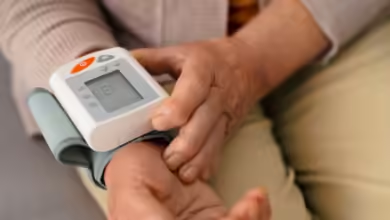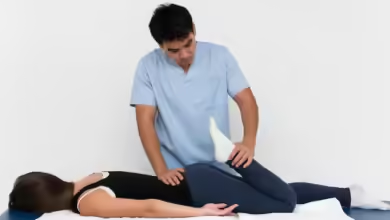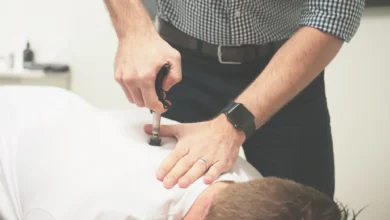Faith and Patience: When and How to Use Shampoo for Hair Fall

In the realm of hair care, one of the most frequently encountered concerns is hair fall. It’s a problem that affects men and women alike, regardless of age or hair type. In the pursuit of luscious locks, we often come across a wide array of products, each claiming to be the ultimate solution. Among these, Shampoo for Hair Fall control are quite prominent. However, not all shampoos are created equal. In this article, we delve into the pivotal role that the right shampoo plays in addressing hair fall issues, and why sulfate-free shampoos are gaining increasing attention in the world of hair care.
The Battle Against Hair Fall
Hair fall, medically known as alopecia, can be attributed to numerous factors such as genetics, hormonal imbalances, diet, and lifestyle. Regardless of the underlying cause, the right hair care routine can significantly mitigate this issue. One of the most accessible and common products in any hair care arsenal is shampoo. But, not all shampoos are made equal when it comes to combating hair fall.
Understanding Shampoo for Hair Fall
The Essential Components
Shampoos tailored for hair fall generally contain a unique blend of ingredients that aim to address the root causes of hair loss. These ingredients often include vitamins, minerals, antioxidants, and plant extracts known for their beneficial effects on hair and scalp health.
The Role of Sulfates
Traditional shampoos often contain sulfates, which are chemical compounds that create the foamy lather we associate with hair washing. However, sulfates can be harsh on the hair and scalp. They can strip away natural oils, leaving hair dry, brittle, and prone to breakage. For those with hair fall issues, this can exacerbate the problem.
The Rise of Sulfate-Free Shampoos
In recent years, there has been a notable shift in consumer preference towards sulfate free shampoo. These shampoos omit sulfates from their ingredient lists, relying on alternative cleansing agents that are gentler on the hair and scalp. Here’s why sulfate-free shampoos are gaining traction:
-
Mild Cleansing
Sulfate-free shampoos use milder surfactants (cleansing agents) that don’t strip the hair of its natural oils. This helps maintain the scalp’s natural moisture balance, preventing dryness and potential hair damage.
-
Reduced Irritation
Sulfates can be harsh on sensitive scalps, causing itching and irritation. Sulfate-free shampoos are a gentler choice, making them suitable for those with sensitive skin or scalp conditions.
-
Color Protection
If you have color-treated hair, sulfate-free shampoos are a must. Sulfates can cause color to fade more quickly, whereas sulfate-free options help preserve your hair color for longer-lasting vibrancy.
-
Suitable for All Hair Types
Sulfate-free shampoos are generally suitable for all hair types, including curly, straight, coarse, and fine hair. They offer a more universal solution for those seeking hair fall control.
How to Use Shampoo for Hair Fall: A Step-by-Step Guide
Now that we’ve highlighted the importance of sulfate-free shampoos, let’s discuss the proper way to use shampoo for effective hair fall control:
-
Wet Your Hair Thoroughly
Before applying shampoo, ensure your hair is completely wet. This helps evenly distribute the product and allows it to lather more effectively.
-
Choose the Right Shampoo
Select a sulfate-free shampoo formulated for hair fall control. The absence of sulfates ensures that your hair and scalp receive a gentle yet effective cleanse.
-
Use the Right Amount
Dispense a coin-sized amount of shampoo into your palm. Remember, a little goes a long way, and using too much shampoo can strip your hair of its natural oils.
-
Lather Gently
Rub your hands together to create a lather, then apply it to your hair. Start at the roots and work your way down to the tips. Be gentle, as rough scrubbing can lead to hair breakage.
-
Massage Your Scalp*
While applying shampoo, use your fingertips to gently massage your scalp. This not only helps cleanse the scalp but also improves blood circulation, which can promote hair growth.
-
Rinse Thoroughly*
Rinse your hair thoroughly with lukewarm water. Make sure there’s no shampoo residue left behind, as this can make your hair appear dull and lifeless.
-
Condition Wisely*
After shampooing, follow up with a conditioner formulated for your hair type. Apply it to the lengths and ends of your hair, avoiding the roots. This helps maintain the moisture balance in your hair.
-
Avoid Hot Water*
When rinsing shampoo and conditioner, use lukewarm or cool water. Hot water can strip your hair of essential oils and exacerbate hair fall issues.
-
Pat, Don’t Rub*
After rinsing, gently pat your hair with a soft towel to remove excess water. Avoid vigorous rubbing, as wet hair is more prone to breakage.
-
Air Dry or Use a Hair Dryer on Low Heat*
Allow your hair to air dry whenever possible. If you need to use a hairdryer, choose the lowest heat setting to minimize heat damage.
In Conclusion, Achieving healthy, lustrous hair requires a combination of faith and patience. Faith in the right products and patience in your hair care routine. When it comes to choosing a shampoo for hair fall, opting for a sulfate-free option can be a game-changer. These gentle cleansers not only protect your hair but also promote overall hair and scalp health. Remember, the key to success in addressing hair fall is consistency. Stick to a hair care routine that includes the use of sulfate-free shampoos, and you’ll likely see gradual improvements in the health and vitality of your hair. Faith and patience are indeed the virtues to uphold on your journey to combating hair fall and embracing the beautiful, healthy hair you deserve.
So, the next time you stand in front of the mirror, remember that the right shampoo, used with care and consistency, can be your ally in the battle against hair fall. Your hair deserves the best – it deserves sulfate-free solutions that provide both faith and patience in every wash.




